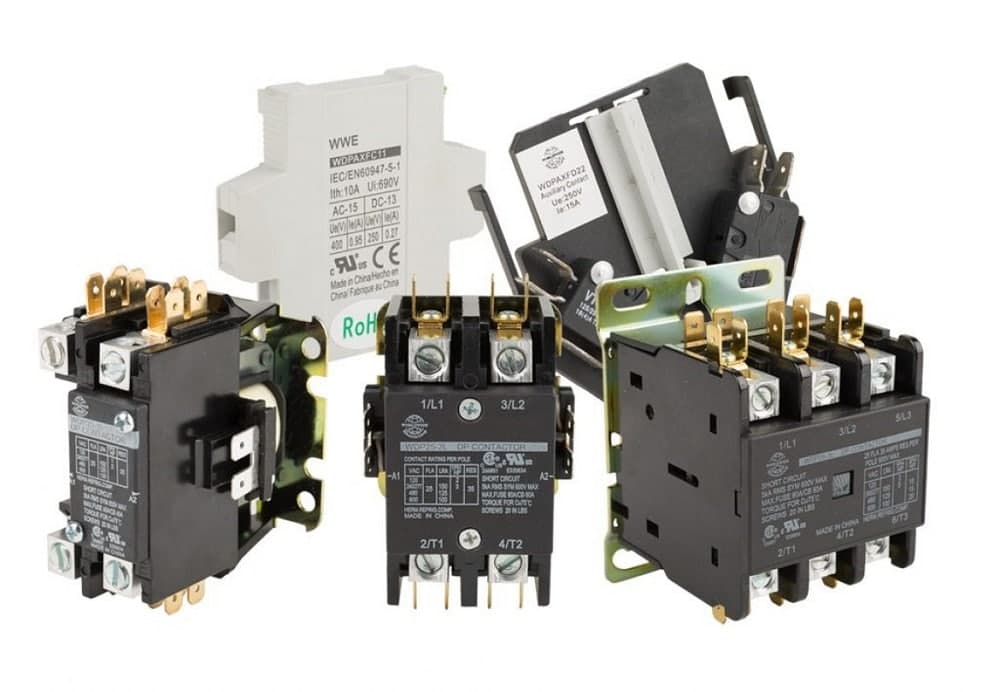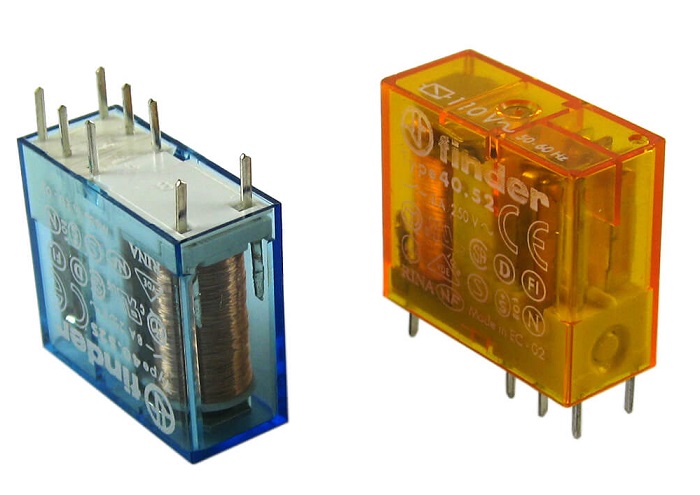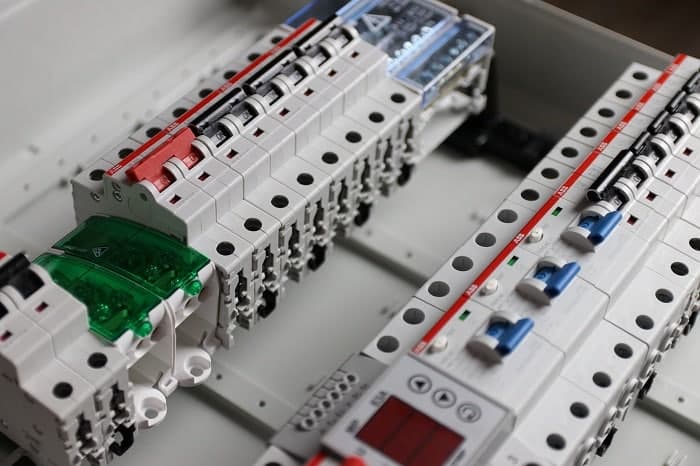In electrical engineering, a switch is an electrical component that can disconnect or connect the conducting path in an electrical circuit, interrupting the electric current or diverting it from one conductor to another. Switches are made in many different configurations, and several specialized forms of them exist, such as a relay and a circuit breaker.
Relays and circuit breakers are devices used to stop currents flowing through circuits. Both apparatus disconnects a circuit, but it is crucial to consider the difference between the relay and circuit breaker before making any decision. Read this new blog in Linquip to find out more about them.
What is a Relay?
First, let us have a quick review of relays and circuit breakers before we explore the differences between the two.
A Relay acts as a switch in circuits involving small currents, used as a sensing and controlling device which makes and closes the contacts electronically or electromechanically. Relay also finds use as a protective device that senses the fault signal and sends it to the circuit breaker that makes the decision to make or break the circuit based on the provided information by the relay.
Relay finds use wherever it is necessary to control a high power or high voltage circuit with a low power circuit. It consists of electromagnets, which become energized when current flows around them. When the current becomes large enough, the electromagnet is able to pull one of the contacts in a circuit towards itself, breaking the circuit.
What is a Circuit Breaker?
A circuit breaker is an automatically operated electrical switch designed to protect an electrical circuit from damage caused by excess current, typically resulting from an overload or short circuit. Inside a circuit breaker, the relay senses the fault or specified amount of current and sends the signal to the electromechanical switch that opens the contacts and protects the circuit in cases of excessive current like overload and short-circuit conditions.
Circuit breakers themselves make use of relays to detect large changes in current. A circuit breaker consists of fixed and moving contacts known as electrodes. Under normal operating conditions, the circuit remains closed and won’t open automatically until and unless the system becomes faulty.
Relay vs. Circuit breaker
A description of the difference between a relay and a circuit breaker is explained by considering several factors like the principle of their operation, the working of relay and circuit breaker, the type of device they are, voltage level, their usability, and whether it works as an amplifier or not. The list of differences is given below.
Type of device
- The relay is a sensing and controlling device that act as a switch when needed.
- The circuit breaker is a switching device acting as circuit disconnection or isolation.
Operation
- The relay senses the fault in the power system and sends a message to the circuit breaker.
- The circuit breaker breaks the contact after receiving a signal from the relay.
Uses
- The relay finds use to separate a low voltage circuit from a high voltage one, in a microprocessor to control heavy electrical load, to control multiple circuits, in automatic change over, and as overload relays for motor protection, etc.
- The circuit breaker finds use in high and low-current devices, industrial equipment and applications, home electrical wiring, power plants, electrical machines, & electricity sharing systems (GND), etc.
Capacity
- The relay can operate one or more circuits at a time.
- The circuit breaker is only used once per circuit.
Contact Breaking
- The relay does not break the contact; it only detects the error and sends the signals to the circuit breaker.
- The circuit breaker is involved in contact breaking by disconnecting it.
Amplifier
- The relay can be considered an electrical amplifier for discrete signals. It turns one signal into many signals, for example, turning a low-voltage signal into a high voltage signal, or vice-versa.
- The circuit breaker cannot be considered to act as an amplifier for discrete signals. It only receives signals from a relay and makes decisions based on them.
Voltage Level
- The relay operates on low power and voltage input signal with guaranteed isolation when needed for operation.
- The circuit Breaker operates on low as well as high power and voltage level and acts automatically on load devices.
Arc Prevention
- The relay does not have the ability to prevent arcs.
- The circuit breaker has mechanisms to detect and prevent the formation of arcs in the circuit.
Few other difference between relay and circuit breaker to keep in mind:
- A relay may be included in a Circuit breaker, but a circuit breaker is not included in the relay.
- A relay finds use to switch circuits with small currents, while a circuit breaker is typically used with large currents.
- A relay typically uses an electromagnet, while a circuit breaker may use electromagnets, too, but they may also use a number of other mechanisms such as bimetal strips.
Conclusion
So, there you have a detailed description of the difference between relay and circuit breaker. If you enjoyed this article in Linquip, let us know by leaving a reply in the comment section. Is there any question we can help you through? Feel free to sign up on our website to get the most professional advice from our experts.
Buy Equipment or Ask for a Service
By using Linquip RFQ Service, you can expect to receive quotations from various suppliers across multiple industries and regions.
Click Here to Request a Quotation From Suppliers and Service Providers
Read More on Linquip
- What is Resistive Circuit? Example & Diagram
- What is Linear Circuit? Example & Diagram
- What Are Resistors for LED Circuits? (Clear Guide)
- Types of Electric Circuits: All Classification with Application
- What is RC Circuit?
- What is RLC Circuit
- What is Capacitive Circuit?
- Types of Resistor: Classification, Application, and Finally Clarification
- What is Parallel Circuit? Definition & Example
- What is Series Circuit? Definition & Example
- What is a Closed Circuit? Definition & Example
- What is a Short Circuit? A Clear Definition & Protection Guide
- Difference Between Linear and Nonlinear Circuits
- What are the Differences Between Series and Parallel Circuits?
- The 8 Best Circuit Breaker Locators in 2022
- What is LC Circuit? Formula, Equitation & Diagram
- What is Open Circuit? Diagram & Example
- What is Inductive Circuit?
- What is AC Circuit and Its Characterization?
- Circuit Breaker vs Fuse- What are the Main Differences?
- How does a Circuit Breaker Work?
- What is the Equivalent Circuit of a Transformer?
- Potentiometer Connection, Working, Circuit Diagram, & Wiring Guide
- Difference Between Relay and Circuit Breaker: Everything You Need to Know
- Difference Between Isolator and Circuit Breaker: Ultimate Guide
- Piezoelectric Transducer and Its Impressive Applications in Electric Circuits
- What are Vacuum Circuit Breakers?
- Types of Circuit Breaker: A Basic Guide to Know Different Classifications





